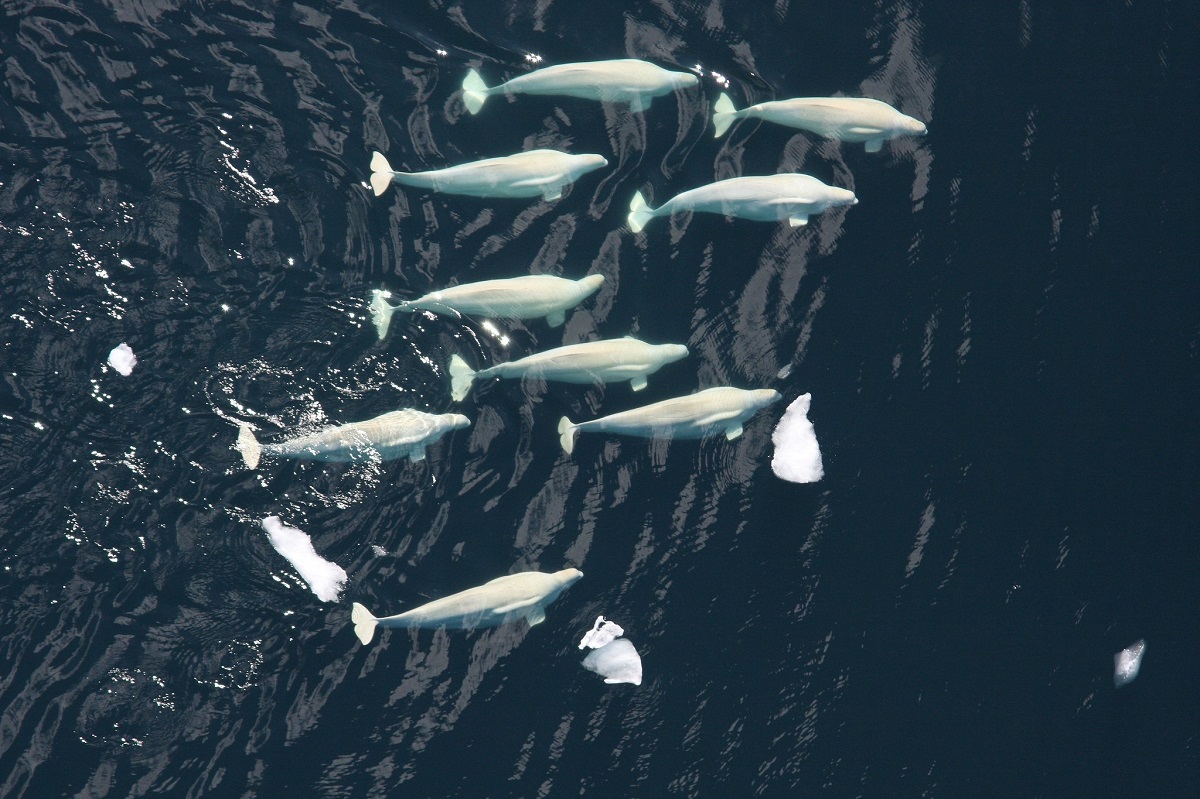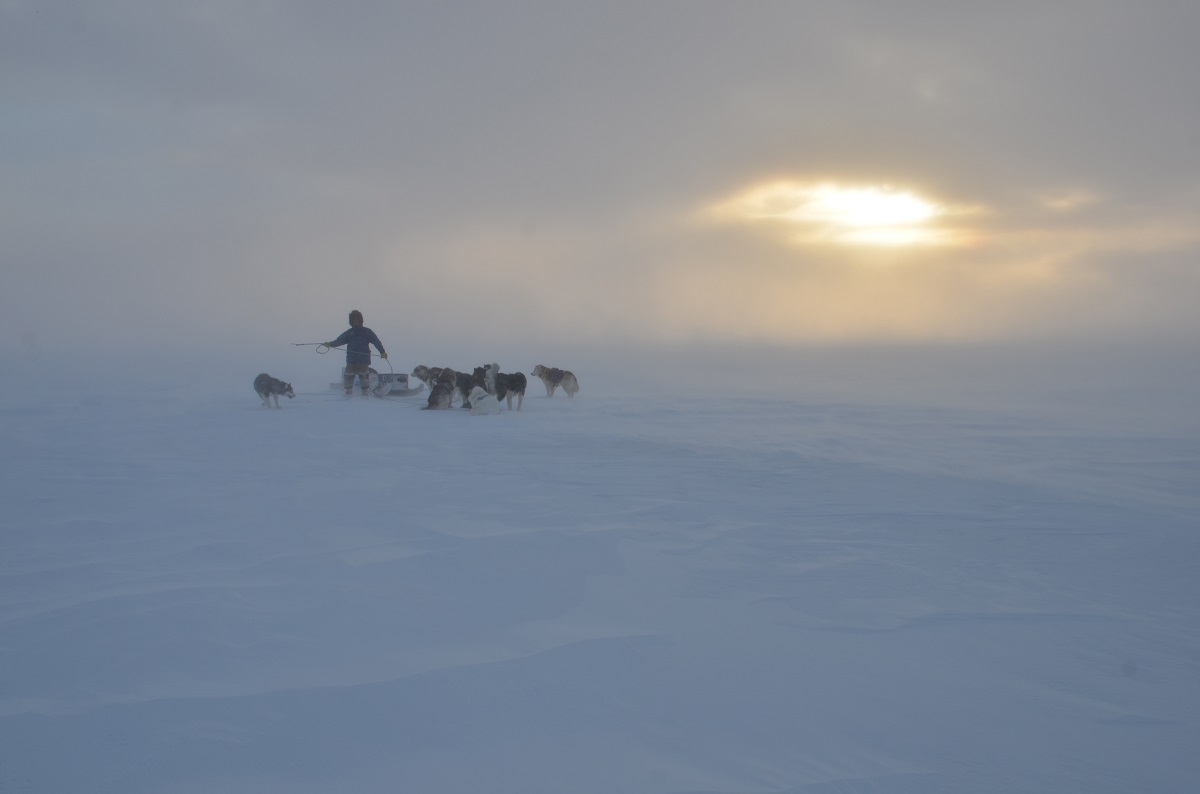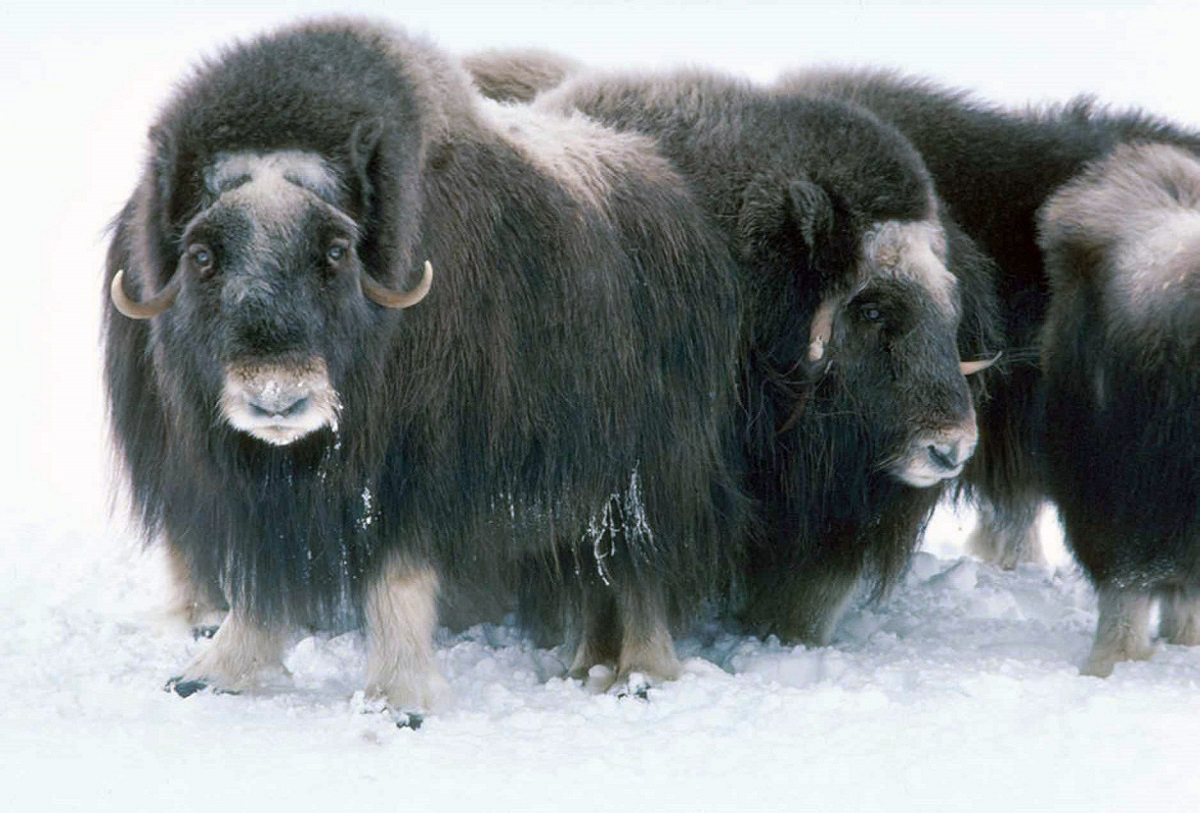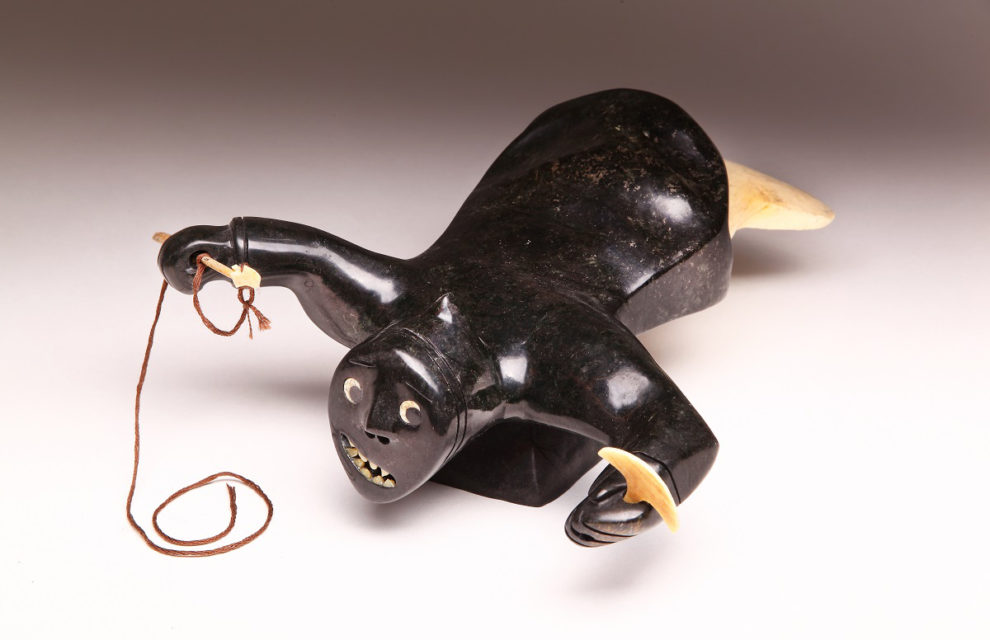I commissioned this carving by Damien Iquallaq for my film The Blinding Sea. It shows a shaman half-human and half-beluga, as he swims in the ocean, holding a harpoon in one hand and an ulu or woman’s knife the other. I like to think this is Kiviuq, who for the Inuit is a shaman-hero something like Odysseus.
While travelling repeatedly across the Arctic, I have moved away from the perspective of industrialized societies and closer to the Inuit perspective, in at least one respect. Inuit see humans as animals, in relationships with other species. And this perspective has helped shape the film I am on the point of completing.
One of the hallmarks of industrialized societies is the belief that humans have unique attributes, such as social organization, power, intellect, emotions and moral standards. And we assume other species lack these attributes. Humans in industrialized societies are sometimes considered a new species – Homo industrialis. Being an apex predator at the top of the food chain makes some of them feel superior to other species, as if simply being able to manipulate, coerce and kill means humans are entitled to control the destiny of other species.

I have never met such an observant people as the Inuit, particularly out in the wilds. Observing animal behaviour helps Inuit locate food, avoid getting eaten themselves, anticipate bad weather, develop survival skills, better understand the environment, and take care of each other.
When I consider all the forms of animal behaviour I experienced while filming The Blinding Sea, one breed of animal stands out above all others in what it has taught me: the husky. I filmed dog-sledding scenes in Alaska, the Yukon, Nunavut and Quebec. Sometimes it was just below freezing; other times it was brutally cold. One time in Gjoa Haven, the air temperature got down to -50°C (-58°F) and the wind-chill to -68.3°C (-91°F). What a challenge to film huskies charging across the ice-pack in weather like this!
I am amazed by the energy, enthusiasm, fearlessness, resilience and (under the right conditions) the teamwork of huskies, although I admit husky teamwork takes some human management! Before filming got underway, I was afraid of dogs. Close proximity to huskies and observing their behaviour cured me of this fear, even though huskies are at least half-wild. I now see this half-wildness as an amazing quality.

Huskies have taken me places I could never have imagined, offering companionship in the most extreme conditions, like in blowing snow, as pictured above, on the ice-pack of Frobisher Bay, Baffin Island.

I suspect humans in industrialized societies underestimate other animals. But observing their behaviour reveals many attributes we humans lack: belugas can communicate underwater over phenomenally long distances, and their habit of swimming in pods demonstrates innate solidarity; huskies have tremendous physical strength as well as far more acute senses of sight and smell than we have, plus the ability to solve problems we humans don’t even notice; and as for the muskox, if polar explorers in the mid-nineteenth century had had the ability of the muskox to locate food under the ice and snow, there would have been far fewer deaths from scurvy and starvation.
No wonder the Inuit study animals, not just as a food source – but as fellow creatures whose behaviour and way of life have lessons for us.
The stories of the shaman-hero Kiviuq relate how he swims to the bottom of the ocean to battle the sea-goddess Sedna, how he travels between species and calls on other animals to perform deeds, how he marries a goose wife, and sometimes does shape-shifting of his own, morphing from one animal into the next. He does not live somewhere on the outer edge of Nature, like a foreign and even unwelcome visitor. He is very much a part of Nature. At the same time, Kiviuq performs magic, transcending normal boundaries and turning reality on its head. He merges two realms, as if passing through a double-sided mirror. He raises questions about time, space and identity.

